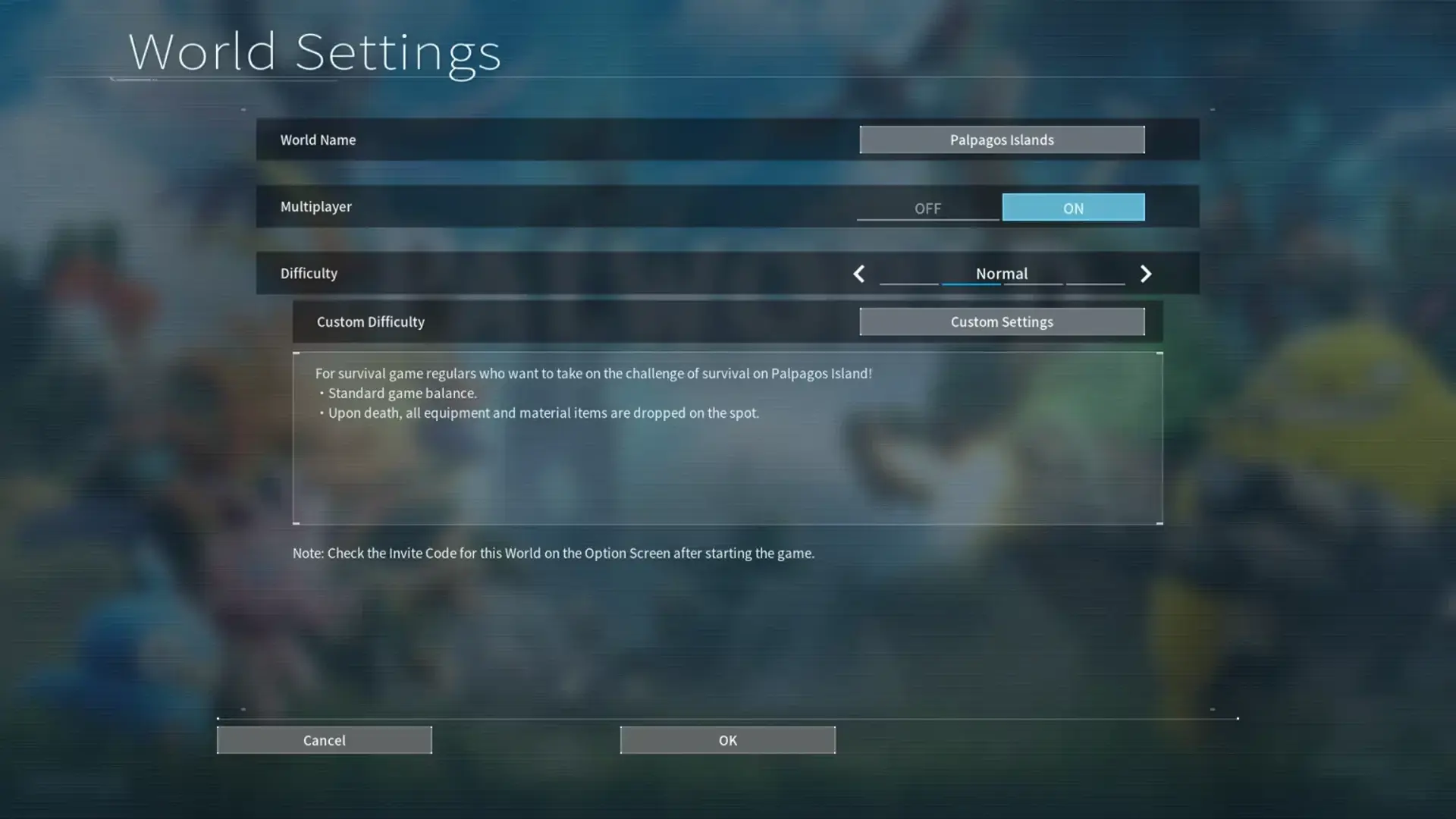Explore the dynamic world of 7 Days to Die on a detailed map with diverse biomes, cities, and key resources for survival. Discover valuable loot spots like Shotgun Messiah and Shamway Foods. Use markers and landmarks to navigate efficiently. Enhance teamwork through collaborative features, sharing markers, and planning base locations. Optimize routes to uncover hidden spots and strategize effectively. The day/night cycle indicator helps plan tasks and gameplay strategies. Utilize the zoom feature for detailed exploration and efficient navigation. If you want to enhance your gameplay experience even more, there are tips on buildings, resources, and interactive markers waiting for you.
Key Takeaways
- Dynamically generated map with various biomes, cities, and landmarks for a fresh exploration experience.
- Essential loot spots like Shotgun Messiah, Working Stiffs Tools, and Cracker Book HQ offer valuable resources.
- Interactive markers aid in navigation, allowing for customized waypoints and notes for strategic planning.
- Zoom functionality enhances map visibility for detailed exploration of buildings, resources, and landmarks.
- Collaborative features enable seamless teamwork, sharing markers, coordinating, and planning base locations efficiently.
Map Overview
In 7 Days to Die, the map offers a dynamically generated world, guaranteeing a fresh experience with each playthrough. The world you explore is randomly generated, meaning that every time you start a new game, the layout of the map will be different. This feature adds a great deal of replay value to the game, as you never quite know what to expect when you venture out into the wilderness.
As you traverse the map, you will encounter various biomes, cities, towns, and landmarks, each offering its own set of resources and challenges. These locations are not pre-designed but are instead part of the randomly generated world, making exploration exciting and unpredictable. Landmarks such as caves, bunkers, and factories are scattered throughout the map, providing unique loot and gameplay experiences for you to discover.
To aid in your exploration, the game provides navigation tools like the in-game compass, custom markers, and waypoints. These tools help you navigate the vast world more efficiently, allowing you to plan your routes and find key locations with ease. Additionally, regular map updates ensure that the world remains compatible with new game versions and incorporate community feedback for continuous improvements.
Key Resources

You'll need to pinpoint essential loot spots to gather key resources efficiently in '7 Days to Die'. Consider exploring varied locations to secure iron, coal, nitrate, and oil shale deposits for crafting needs. Strategize your resource gathering to make sure you have the necessary supplies for survival in the game.
Essential Loot Spots
When scavenging in Navezgane for essential resources, prioritize locations like Shotgun Messiah, Working Stiffs Tools, Shamway Foods, Cracker Book HQ, and Passing Gas HQ. Shotgun Messiah provides firearms and ammunition, essential for defense against the undead. Working Stiffs Tools is a go-to spot for tools and building materials vital for fortifying your base. Shamway Foods offers a variety of food and beverages to keep you nourished and hydrated. Cracker Book HQ is a treasure trove of valuable schematics and books that can enhance your skills and knowledge. Finally, Passing Gas HQ is the place to go for fuel and vehicle parts, ensuring you have the means of transportation for your survival in Navezgane.
Resource Gathering Tips
For efficient resource gathering in 7 Days to Die, prioritize locating key resources such as iron ore, coal, nitrate powder, oil shale, and water sources throughout the various biomes on the map. Here are some tips to help you gather these essential resources effectively:
| Resource | Location |
|---|---|
| Iron Ore | Wasteland biome, large boulders |
| Coal | Forest biome (surface nodes), caves (underground) |
| Nitrate Powder | Snow biome (boulders), caves, underground deposits |
| Oil Shale | Desert biome, oil shale nodes |
| Water Sources | Rivers, lakes, pools throughout the map |
Remember to explore these areas strategically to guarantee a steady supply of these vital resources for your survival. This content is licensed under CC BY-NC-SA.
Buildings and Landmarks

Buildings and landmarks in the map of 7 Days to Die are diverse structures that offer players valuable loot, resources, and challenges to navigate. These points of interest (POIs) include a variety of structures such as houses, factories, and bunkers. When exploring these locations, players can discover essential items for survival, face different challenges, and gather resources to aid in their journey.
Navigating through the map can be made easier by using these landmarks as reference points to plan efficient routes and orient oneself in the game world. Each building and landmark caters to various playstyles, providing unique rewards and gameplay experiences. Understanding the locations of key structures is vital for enhancing your strategies and improving your chances of survival.
Whether you prefer scavenging for supplies in abandoned houses or braving the dangers of industrial factories, exploring the buildings and landmarks in 7 Days to Die is essential for your progression. By familiarizing yourself with these diverse structures and the resources they offer, you can increase your chances of thriving in the unforgiving post-apocalyptic environment.
Interactive Markers

Utilize interactive markers in the map of 7 Days to Die for efficient navigation and strategic planning. These markers are available to help you customize your exploration experience. By setting waypoints and notes, you can plan your routes effectively and mark important locations. The ability to share these markers with friends in real-time allows for coordinated efforts and streamlined exploration.
In addition to navigation assistance, interactive markers play an important role in strategic planning. They aid in choosing base locations, identifying potential dangers, and setting goals efficiently. The customizable feature of these markers enables you to personalize your notes and reminders for specific locations, ensuring a more tailored gameplay experience.
Regular updates and maintenance of these markers are essential to their accuracy and usefulness across different game versions. By keeping them up to date, you can rely on these tools to enhance your gameplay and make your journey through the world of 7 Days to Die more organized and effective.
Zoom Functionality

When using the zoom function in the game map, you can enhance your visibility, making it easier to navigate and explore locations in detail. This feature allows you to plan your movements efficiently, identify key areas, and steer clear of potential dangers. By zooming in, you can gain a better understanding of the terrain and optimize your exploration and survival strategies in the game.
Enhancing Map Visibility
To enhance your map visibility in 7 Days to Die, consider utilizing the zoom functionality for detailed location exploration. By zooming in, you can focus on specific buildings, resources, or landmarks with greater clarity. Conversely, zooming out offers a broader view of the surrounding terrain, aiding in navigation and strategic planning. This enhanced visibility is essential for identifying potential threats or opportunities within the game world. Remember, the zoom feature can be a powerful tool in your arsenal, allowing you to scout the area effectively and make informed decisions. So, next time you're exploring the map, don't forget to leverage the zoom functionality for a more immersive and advantageous gameplay experience.
Navigating With Ease
Improving your map visibility through the zoom functionality in 7 Days to Die is essential for moving around easily and maximizing your strategic advantage in the game world. The zoom feature allows you to view detailed information at different magnification levels. By zooming in, you can closely examine specific locations such as buildings or resources for better planning. Conversely, zooming out provides a broader view of the entire game world, aiding in overall navigation and strategic decision-making. This function helps you identify points of interest, landmarks, and potential threats from a distance, enhancing your exploration, resource gathering, and survival in the game. Remember to utilize the zoom feature efficiently to navigate the world effectively. Remember, all content is licensed under CC BY-NC-SA.
Detailed Location Exploration
Improve your exploration in 7 Days to Die by utilizing the detailed location exploration feature, including the zoom functionality for precise navigation. The zoom feature allows you to investigate specific areas on the map, aiding in the identification of valuable resources, key buildings, and important landmarks efficiently. By zooming in, you can scrutinize your routes more effectively, uncover hidden spots, and devise exploration strategies. This functionality greatly enhances the visibility of essential points of interest and navigation markers, facilitating your journey through the game world. With the zoom feature at your disposal, detailed location exploration becomes more manageable, offering a clearer understanding of the terrain and helping you navigate with greater ease. Remember to respect the game's license: CC BY-NC-SA.
Day/Night Cycle Indicator
The day/night cycle indicator on the 7 Days to Die map offers essential real-time information for players to strategically plan their in-game activities. This feature helps you monitor the progression of time within the game, indicating whether it is day or night. The indicator changes its color or brightness to represent different phases, assisting you in scheduling tasks effectively. By understanding this indicator, you can optimize your gameplay, such as choosing to scavenge for resources during the day and fortifying your base at night to enhance your chances of survival.
In '7 Days to Die,' grasping the significance of the day/night cycle indicator is pivotal for your survival and overall strategy. With this tool, you can adapt your actions based on the time of day, maximizing your efficiency and safety. Whether you prefer exploring during daylight or fortifying defenses under the cover of night, this indicator serves as your guide to navigating the challenges presented in the game. Stay vigilant and plan your activities wisely using the valuable information provided by the day/night cycle indicator.
Collaborative Features

Experience seamless teamwork in 7 Days to Die through its collaborative features that enable players to share markers and coordinate in real-time. By utilizing these tools, team members can efficiently plan base locations, strategize routes, and highlight dangerous areas to guarantee the safety of the group. The customizable markers allow for personal notes and details to be added, enhancing coordination and communication among players.
To better understand how these collaborative features work in different biomes in 7 Days to Die, refer to the table below:
| Biome Type | Collaborative Feature |
|---|---|
| Forest Biome | Share markers to pinpoint valuable resources. |
| Desert Biome | Coordinate base locations to optimize water availability. |
| Snow Biome | Highlight dangerous areas to avoid frostbite risks. |
| Wasteland Biome | Plan routes to navigate radioactive zones safely. |
These collaborative tools not only facilitate teamwork but also contribute to the overall efficiency and success of your group in the diverse biomes of 7 Days to Die. By taking advantage of these features, you can navigate the challenges of each biome with ease and secure your survival in the post-apocalyptic world.
Teamwork Enhancement

Improving teamwork in 7 Days to Die involves leveraging collaborative features to enhance coordination and communication among players. Sharing markers with team members is a valuable tool for CC, as it improves coordination by providing a visual reference point for everyone to follow. This allows teammates to stay on the same page and work towards common goals efficiently. Collaborating on base locations and routes is vital for effective teamwork. By discussing and deciding on these aspects together, teams can develop a solid strategy that maximizes efficiency and ensures everyone is on board with the plan.
Highlighting dangerous areas on the map is another way to enhance teamwork. By marking these zones, teammates can be alerted to potential risks, promoting caution and helping to keep everyone safe. Utilizing customizable markers for personal notes adds a layer of individualized planning within the team. This feature allows players to organize their thoughts, tasks, and objectives, contributing to better overall coordination. Lastly, engaging in mapping projects as a team not only fosters teamwork but also strengthens the bonds among team members. Working together towards a common mapping goal builds trust, communication, and a sense of unity, all of which are essential for successful collaboration and strategy in the game.
Efficient Navigation

Effectively traversing the expansive map in 7 Days to Die requires keen observation and strategic planning. To navigate efficiently, utilize landmarks and custom markers as reference points. The in-game compass is a valuable tool for maintaining the right direction while exploring the vast world. Planning your routes strategically allows you to visit all locations effectively, optimizing your time and resources. Stay alert to your surroundings to avoid getting lost in the immersive game environment. Efficient navigation is essential for survival and progression in 7 Days to Die.
| Efficient Navigation Tips | Description |
|---|---|
| Use Landmarks | Utilize notable features as guides for navigation. |
| Custom Markers | Set personalized markers to mark important locations. |
| In-Game Compass | Rely on the compass for accurate direction while exploring. |
| Strategic Route Planning | Plan your routes carefully to visit all locations efficiently. |
| Stay Vigilant | Be aware of your surroundings to avoid getting lost. |
Frequently Asked Questions
What Cities Are in 7 Days to Die?
In 7 Days to Die, you'll come across cities like Perishton, Gravestown, and Departure. These urban areas offer various challenges and rewards as you explore them. Cities are rich in resources, loot, and crafting materials, with unique spots such as stores, hospitals, and government buildings. It's wise to fortify and set up bases in cities for better defense against zombies and other dangers. Explore, loot, and survive in these dynamic urban landscapes!
Are There Different Maps for 7 Days to Die?
Yes, there are different maps for 7 Days to Die. You can choose between Navezgane for a structured layout or Random World Generation for more unpredictable terrain. Each map offers its own challenges and opportunities for exploration. Whether you prefer a pre-defined world or a randomly generated one, 7 Days to Die provides diverse environments to test your survival skills. So, go ahead and select the map that suits your playstyle best!
Where Are 7 Days to Die Maps Located?
7 Days to Die maps are essential for your survival. They're located in-game, easily accessible by pressing the M key. These maps display points of interest, resources, biomes, and terrain features. By using them, you can navigate, plan your routes, and find essential resources in the post-apocalyptic world. Online detailed Navezgane maps and community-created options are also available for your reference and exploration. So, use these maps wisely to enhance your gameplay experience.
Is There a Way to See the Whole Map in 7 Days to Die?
Yes, there is a way to see the whole map in 7 Days to Die. By exploring the game world, you gradually reveal more of the map. Crafting and using a map can help you keep track of locations you've discovered. Utilizing landmarks and the in-game compass will assist you in traversing and exploring the entire map. Collaborating with other players to share map markers can also aid in uncovering the entire map.
Conclusion
You may think that exploring the 7 Days to Die map is overwhelming, but with the interactive markers and zoom functionality, you can easily find your way around. By working together with your team, you can efficiently gather resources and survive the harsh day/night cycle. Don't let the size of the map deter you – embrace the challenge and conquer the world of 7 Days to Die with your comrades by your side.










